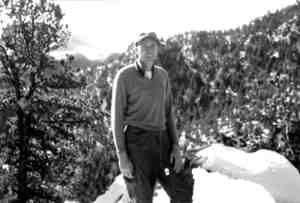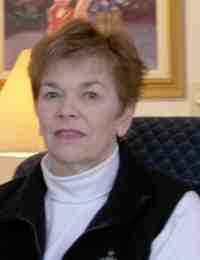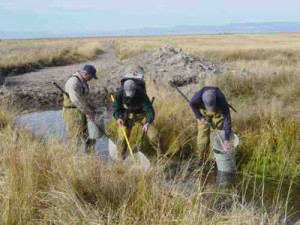Review by Ed Quillen
Agriculture – May 2007 – Colorado Central Magazine
Home Land – Ranching and a West that Works
An anthology edited by Laura Pritchett, Richard L. Knight, and Jeff Lee
Published in 2007 by Johnson Books
Rocky Mountain Land Library Series
ISBN 155566-400-8
THE WESTERN COUNTRYSIDE offers two landscapes. One is for play, with campgrounds, single-track trails, 14er routes, fishing holes, hunting camps, 4WD roads, and sundry other attractions promoted in our tourist brochures. The other landscape is for work, where cattle (and occasionally sheep) convert grass into meat.
The two landscapes often intersect, and the resulting conflicts can get more than ugly. We can pick from scores of books about the recreational landscape, and now we have an anthology from the working landscape.
It’s about time, because we usually don’t read much from the stock-raisers, and they have a lot to tell us about our landscape.
As with most anthologies, the quality varies considerably in this collection, but the best ones really soar. Among my favorites was “Confronting Fear,” written by Diane Josephy Peavey, an Idaho woman who runs a sheep ranch near Sun Valley with her husband. Among the neighboring townfolk was a hard-core environmentalist who wanted to end all grazing on public lands. Since the Wood River Valley was becoming a high-end resort zone, the anti-grazing sentiment was gaining in popularity:
“They meant to get rid of us, all of us in the arid West who raised livestock. And they were going for the jugular. Without the ability to graze public lands in the summer when we were growing hay for winter on our private lands, many families would not have enough feed for their animals and would be forced out of business.”
To counter some of that, the Peavey family tried to build closer ties to the community. “We began to market our lamb locally at restaurants and markets to build appreciation for our work. What better way to make friends than a good rack of lamb from animals raised in high mountain meadows? But the work proved highly labor-intensive for our crew, already stretched thin.”
There was a stock route along the valley. The county asked the sheep producers if the corridor could also be used for a paved bike path. The ranchers agreed, but as soon as the concrete dried, the complaints began: “The sheep droppings are getting caught in my Rollerblades and my bike tires. What are these animals doing in our bike path?”
PEAVEY PONDERS THAT. “This was an easement reserved for the migration of sheep and used for over 100 years. Were historic rights once again to be pushed aside when their promises became inconvenient?”
At that point, I figured I was going to read about a conflict just this side of nuclear war between ranchers and recreationalists. But her husband, John, had a brilliant idea. He put an ad in the paper, inviting people to a café for very early coffee and some talk about sheep-ranching. “Then, with the first light of day, the group of twenty would-be herders pulled on warm gloves, jacks, and hats, and stepped into the cold to catch up with the 1,500 sheep. And all of us began the move south, along the bike path, that mid-October morning.
Where there had been misunderstanding and hostility, there came an annual festival, focused on trailing the sheep, including “the music and dance of the people who figured prominently in the sheep business, the Scots, the Basque, and the Peruvians. There is a Basque lamb dinner, demonstrations of spinning, weaving, sheep shearing, and shepherding with the dogs.”
She concludes that “Ranching in the radical center for us means sharing our life with those who want to know what we do and why. So we take the curious and possibly the hostile head on, telling a story so basic to survival, so intrinsic to the land and its history, that it has smoothed rough edges, quieted brashness, and offered a promise of hope for this western country.”
If residents participate in the sheep drive, they know why the trail is there. It isn’t some abstraction, and the stock-growers become neighbors, rather than just some remnant economic segment.
That’s one theme of this collection, restoring the connection between food producers and food consumers. And it points out how much we town folks rely on agriculture to provide us nearby open space — a working landscape.
THE PROBLEM, in modern America, might best be exemplified by George Sibley’s observation a few years ago in Gunnison, where the McDonald’s used to sit next to a pasture. McDonald’s sells beef, but it comes from packing plants far away. There are hundreds, if not thousands, of miles between those cows and the hamburgers they will become, even if they’re only a few yards from each other. It didn’t affect McDonald’s supply when the pasture became a Holiday Inn — and perhaps it should have.
In other words, our agriculture has been disconnected from our culture, and we need to restore the connection. Some of that involves purchasing local foods when we can and encouraging markets for more, and some of it has to come from the producer end, building better relationships with the community.
There are many other good essays and articles in here, giving us city slickers a better understanding of what eventually arrives in our kitchens, along with a few poems. One contributor, Aaron Abeyta of Antonito, may be familiar to Colorado Central readers, and others, like Rick Bass and Laura Pritchett, may be known even more widely.
A few of the essays in Home Land were a little too rhapsodic about relating to the land for my taste, and I ran across a clinker or two, most notably a rather academic piece about cowboy poetry. But by and large, this is good and informative reading, and a worthy continuation of the Rocky Mountain Land Library Series.
Proceeds from the book will go to the Colorado Cattleman’s Agricultural Land Trust, which helps preserve land in agriculture through conservation easements.



